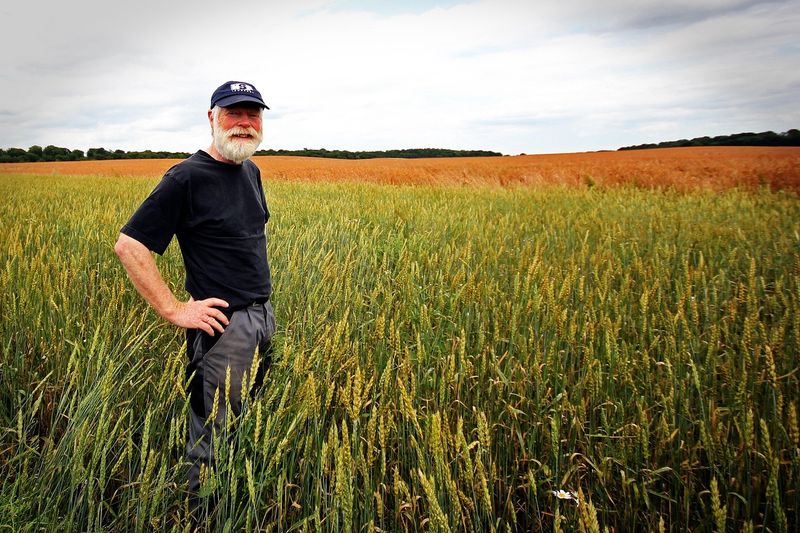
Published in News
Bailouts, Bankruptcies, and Broken Promises: America’s Farmers Feel the Burn of Trump’s Trade War
As U.S. farmers brace for another bailout amid falling crop prices and a trade war with China, many say government checks can’t fix the deep wounds left by lost markets and soaring costs.

A Bitter Harvest: When Tariffs Turn to Trouble
Across the Midwest this fall, combines are humming — but beneath the golden fields, anxiety runs deep. For many farmers, the 2025 harvest isn’t just about yields; it’s about survival. President Donald Trump’s renewed trade war with China has turned America’s heartland into ground zero of an economic standoff that’s cutting deep into rural livelihoods.
The White House has promised a new bailout — somewhere between $10 billion and $14 billion — to soften the blow from collapsing exports and skyrocketing production costs. Trump insists the payments will be funded by “tariff money” collected from China, touting the move as a patriotic reinvestment in American agriculture.
But for farmers on the ground, the relief feels more like a Band-Aid on a bullet wound.
“We want markets, not bailouts,” said Matt Rehberg, vice president of the Wisconsin Soybean Association. “You can’t plan your future around political talking points.”
Crashing Prices, Soaring Costs
The math isn’t adding up for growers. Corn prices have tumbled to around $4 a bushel — roughly break-even for many farms — while soybeans have plunged nearly 40% since 2022. Meanwhile, the cost of fertilizer, seed, and fuel has soared more than 30% in just five years.
“It’s getting harder to make the numbers work,” said Wisconsin farmer Zac Soltvedt. “Corn prices keep dropping, but the cost of growing it just keeps climbing.”
A recent survey by the National Corn Growers Association found that nearly half of farmers believe the U.S. is teetering on the edge of a farm crisis.
And the pain shows up in the data: 93 farm bankruptcies were filed in the second quarter of 2025, nearly double last year’s rate, according to the Federal Reserve Bank of Minneapolis.
Trade War Fallout: China Turns Its Back
For decades, China was America’s biggest customer for soybeans — buying nearly half of U.S. exports. But after Beijing slapped retaliatory tariffs of up to 34% on American soy, that market has all but vanished.
“We never regained that lost ground from the first trade war,” said Rehberg. “China went shopping elsewhere — mainly in South America.”
Indeed, Chinese buyers have now made Brazil their primary soybean source, leaving U.S. farmers holding unsold stockpiles. For some, the losses run as high as $60 per acre.
Even Trump’s own Agriculture Secretary, Brooke Rollins, admits the situation is grim. She confirmed the administration is exploring a bailout “funded through tariff income now coming into America.” But she also blamed the previous administration for “losing market access,” while promising that Trump’s team is rebuilding trade relationships “unlike any time in history.”
The Politics of Pain
Behind the scenes, the politics are as tangled as the soybean roots in an Iowa field. Powerful agriculture lobby groups and Republican lawmakers — many from farm states — have been pressuring the administration to act fast.
“We’re taking in a lot of money,” Trump said last month from the Oval Office. “We’re going to make sure our farmers are in great shape.”
Yet even within his party, skepticism lingers. Some Republicans warn that using tariff revenue for direct payments could backfire politically — or even run afoul of the Supreme Court if the tariffs themselves are ruled unlawful.
Meanwhile, farmers are running out of time. The federal government shutdown has stalled USDA payments and farm loans, leaving many without the cash they need to pay for next year’s planting season.
“It’s just disappointment,” said Iowa farmer Stu Swanson, who’s waiting on conservation program payments. “We send people to Washington to work for us — not shut us down.”
Bailouts Can’t Buy Stability
This wouldn’t be Trump’s first farm rescue. During his first term, he distributed $23 billion in aid when tariffs triggered a similar market collapse. But experts say the payouts don’t solve the core problem — they only delay the inevitable.
“Bailouts can’t rebuild lost markets,” said agricultural policy professor Jonathan Coppess from the University of Illinois. “They can actually make things worse if high costs stick around and markets don’t come back.”
The reality is that most farmers would rather sell their crops than cash government checks. “We don’t like handouts,” said Iowa soybean grower Robb Ewoldt. “We’d rather make it with our own two hands.”
Still, for many, the choice this winter isn’t ideological — it’s existential.
“If the bailout doesn’t come through,” one Nebraska farmer said, “some of us won’t make it to spring.”
A Fragile Future
Farmers have weathered floods, droughts, and price crashes before. But this time, the storm is political — and it’s reshaping the landscape of rural America.
As Trump doubles down on his “America First” trade vision, the farmers who helped send him back to the White House are left wondering if that loyalty will be rewarded — or if they’ve become collateral damage in a high-stakes global gamble.
For now, they’re harvesting good crops under clear skies, but the mood is far from sunny.
It’s a bittersweet harvest — one where survival depends not on the soil, but on Washington.
Sources:
